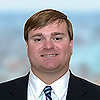From a regional perspective, we favor Europe as spreads are wider than in the US market. At the sector level, we agree with our colleagues Campe Goodman and Rob Burn that financials within Europe appear particularly attractive on a relative basis. European bank spreads have not fully recovered from the banking sector crisis in March 2023 despite adequate capital levels and benign asset-quality trends. US consumer cyclicals, in contrast, appear expensive even when compared with other, more defensive sectors, and we believe they are more vulnerable to a slowing global economy as consumers tighten their purse strings. In emerging markets, we still prefer the below investment-grade part of the market over the higher-quality segment, though security selection is key to navigating the large number of distressed issuers and avoiding defaults. Overall, we think that as the global economy slows and defaults pick up, there will be opportunities to add global high-yield exposure at wider spreads over the course of 2024.
Macroeconomic backdrop likely to deteriorate
Recent economic data increases our confidence that a global disinflationary trend is taking hold, yet central bank rhetoric indicates a preference for maintaining a “higher-for-longer” monetary policy impulse, increasing the probability of a policy error. We are starting to observe softer manufacturing data, weaker consumer spending, and depletion of excess consumer savings in the lower income cohorts. Normally at this stage of the economic cycle, relatively weaker consumer strength should translate into slowing investment spending; however, government fiscal spending programs may be distorting the true picture. In aggregate, we believe Europe is better positioned than the US as its consumers have stronger balance sheets and the region has yet to enjoy the benefits of more accommodative fiscal policies. We think that a mild global recession remains a distinct possibility, but, on balance, see a soft-landing scenario as more likely.
Corporate fundamentals have proven resilient thus far
While higher borrowing costs have had a limited impact on corporate earnings and credit profiles so far, we expect that to change in the coming quarters as the economy slows. Default rates have already increased to 4.5% , which is close to historical averages. 2 We envision that this number could move modestly higher but do not see a full-scale default cycle (higher than an 8% – 10% range) on the horizon given the higher-quality composition of the high-yield market relative to past cycles. For example, the US high-yield market is composed of nearly 50% BB rated credits today, and only 12% CCC rated issues, about half of its CCC weight going into the global financial crisis.3
Despite concerns about the impact of rate increases, we do not believe higher interest expense alone will trigger a wave of defaults. The starting point of strong earnings and interest coverage provides ample cushion for deterioration, in our view. Still, we prefer to stick to more stable credit profiles and are wary of the high rate of growth and weaker underwriting standards of deals financed in the private credit market, which could portend rising future defaults.
Supportive technical backdrop should limit downside
As market consensus now appears to embrace the soft-landing scenario, interest in high-yield fixed income among market participants has started to increase, but inflows represent a change from a very defensive stance overall.4 Although demand for high yield generally remains solid, we would not be surprised to see some crowding out due to relatively attractive yields offered across investment-grade corporate and government bond sectors. The quality of recent new issuance remains generally healthy, and we are not yet seeing widespread aggressively structured deals or use of proceeds that increases leverage. Among the tail risks we are monitoring, geopolitics and inflation dominate the narrative, though the latter should gradually dissipate as a concern, barring exogenous shocks. If our outlook for a soft landing proves prescient, it should limit the magnitude of spread widening compared to past downturns. But we are placing greater emphasis on valuations than fundamentals to determine our risk posture, and we think there will be better opportunities for nimble, discerning active investors to increase exposure at wider spreads in the year ahead.























